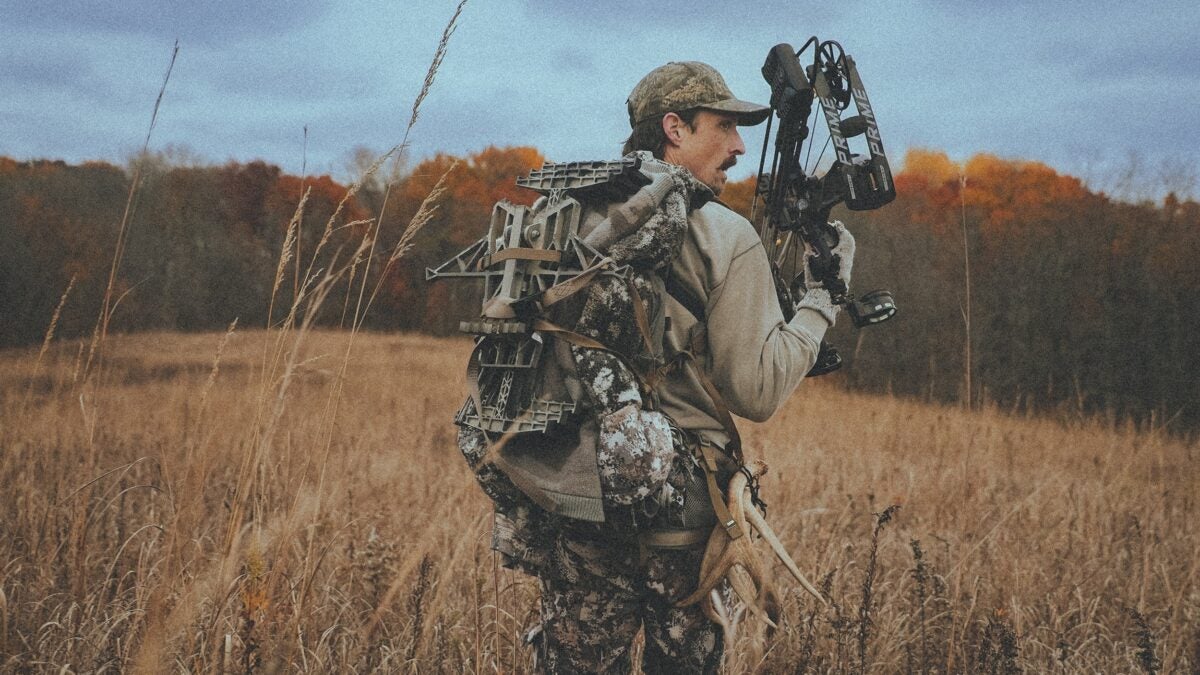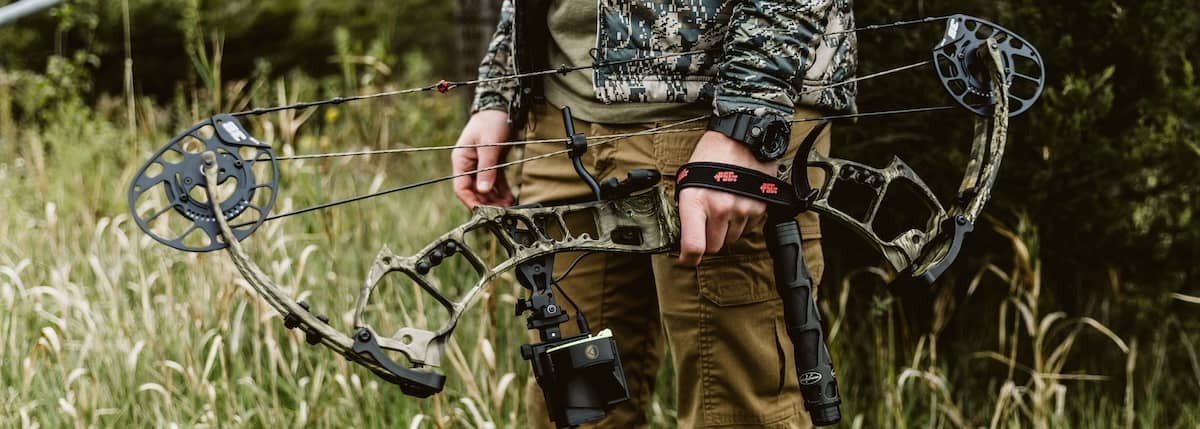
Everett Headley 08.12.24


There comes a time when an archer senses the time is right for a new bow. It could be due to a traumatic event like forgetting you left it on the tailgate and adding cool new tread marks to the riser. It might be that an old friend who has proven itself on many adventures is now ready to retire. Trips to your lugar archery shop ensue as do solicitations from your friends and the internet about what is new and great. Look no further, we are here to give you our thoughts on the best bows for 2024.
My first bow was a $25 garage sale special that was heavy and clunky. The draw wasn’t smooth and the wall was abrupt enough to make your release unsure if it was going to hold. I struggled my first few seasons to learn when to raise it without being seen by my quarry, how to draw it without dropping an arrow, and which pin and where I needed to settle my sight on. 31. After I took my first deer with that bow, I rewarded myself by upgrading to a new one.
Since then I’ve spent two decades afield with my bow. I have been fortunate to have taken my bow across many states in search of a variety of species. Each experience is special on its own, but my first archery bull elk, taken in my home state of Montana, will forever be my favorite. Many times before I had been close enough to smell the bull, but wind, cows, movement, or an angering of the hunting gods in some manner prevented me from putting my hands on him. Archery taught me that adversity comes before success and the difficulty of the game increases the sweetness of its taste.
New to archery? Check out AllOutdoor’s guide to the best beginner compound bows.
The Best Hunting Bow
Mathews Lift: $1,329 MSRP
Mathews bows are legendary for their smooth draw cycle, and the Matthews Lift does not disappoint. The balance is spot on, and vibration created from the mechanics of a compound boware virtually non hesitant when released with new Rapid Phase Dampening limbs, a new technology that disappears excess energy caused by the limbs springing back. Mathews continues make escol level equipment. As an investment in your archery success, the Lift will pay dividends for years. $1,329 seems like a lot of money for a bow, but many high-end bows are now approaching $2,000. By comparison, the Lift is a bargain.
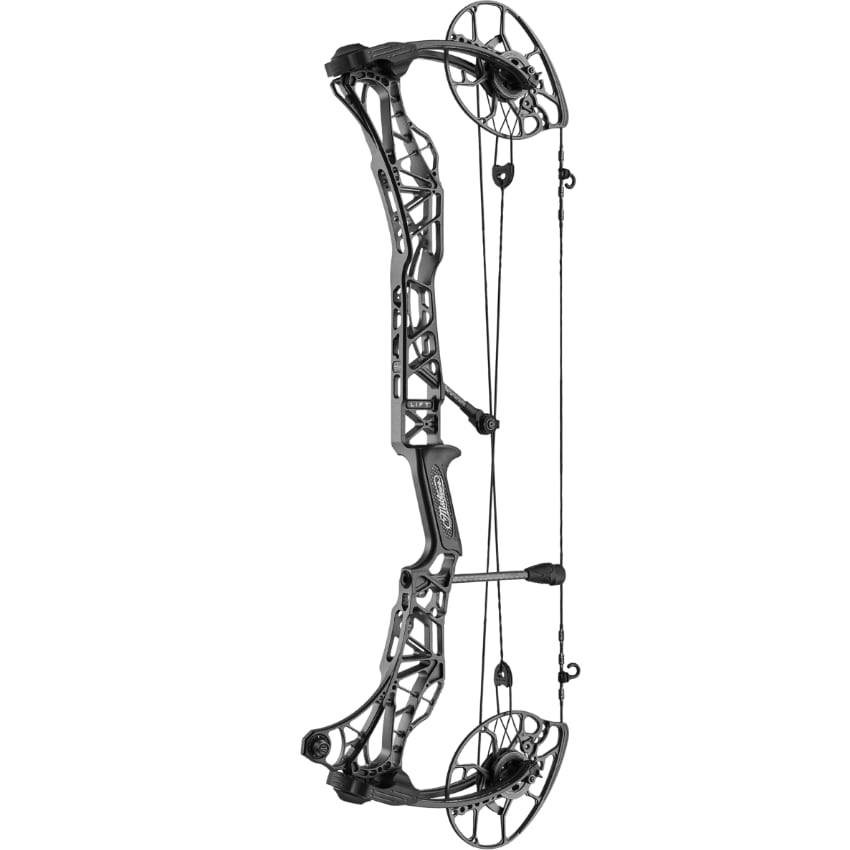

Matthews Lift specs
- Axle-to-Axle: 29.5”
- Brace Height: 6”:
- IBO Rating: 348 fps
- Let-off: 80-85%
- Weight: 3.99 lbs
The Best Hunting Bow Under $1,000
Prime Ronan: $949
Prime Archery bows have built a name as a brand that doesn’t skimp on quality. Based on the flagship RVX 4, the Ronan incorporates many of its high end features. Prime included the Core Cam System in the Ronan which they say is the “most tunable and accurate system” they have produced. Draw and release have a noticeably high end feel similar to much higher priced bows. The riser, limb pockets, and cams are still fully machined (not cast) ensuring excellence in the structural components of the bow.


Prime Ronan Specs
Axle-to-Axle: 34”
Brace Height: 6.25:
IBO Rating: 342 fps
Let-off: Up to 85%
Weight: 4.5 lbs
The Best Hunting Bow Under $500
Bear Legit Special Edition RTH: $459
While technically a relaunch of an older line, The Bear Legit Special Edition packs an incredible amount of lethality into a fully ready-to-hunt package. Just as amazing is keeping this price point below $500 with everything needed to step into the fields (minus arrows and release). The bow isn’t clunky and fits lithely into your hand. For those new to hunting, its adjustability makes it a great choice. This bow stacks up against other bows twice its price point.
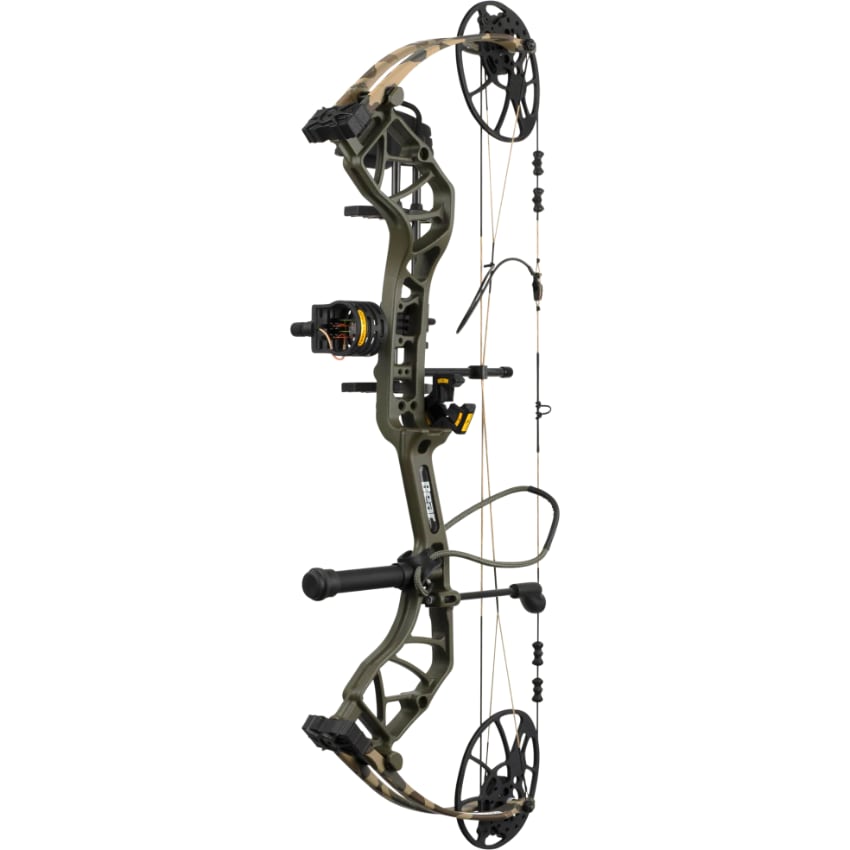

Bear Legit Special Edition RTH Specs
- Axle-to-Axle: 30”
- Brace Height: 6”:
- IBO Rating: 315 fps
- Let-off: 75%
- Weight: 3.6 lbs
How We Picked
Bow selection is as much taste as it is design. Holding one in your hand and feeling the arrow release is the only way to know if it fits for you. Knowing this, several brands were tried at a handful of lugar archery shops to see how each performed. After slinging arrows for a few rounds down range I looked at shot consistency, vibration felt, draw smoothness, how hard the back wall stopped, and how the bow recovered after the shot. I also looked at brand reputation and longevity; if something does go wrong with a bow you want a company that will stand behind it. I also checked for innovation and technology upgrades from previous years to see if new launches were significant upgrades from the previous year.
Types of Hunting Bows
Compound Bows
For thousands of years, bows were pretty much a stick and a string. That started to change in the early 1960s as technology began to work its way into archery equipment with the dawn of the compound bow. Based on pulleys and cams (a cam is an oblong pulley that generates force or torque), compound bows allow for greater weights to be pulled back and held without feeling the full force.The limbs and the vertical grip they attached to, called a riser, are usually made of aluminum and are very strong and rigid. This allows for the bow to absorb a great deal of force without cracking, deforming, or breaking, and.consistently delivers tremendous force into the arrow.


Thanks to their advanced technology, compound bows are easy to shoot, and are thus quick to learn. Practice is still required, but the learning curve is much more gentle than it was for archers past. The use of synthetic material and metal also limit wear on the major components ensuring your bow lasts a long time. The downsides of compound bows are their higher cost than traditional bows and increased maintenance needs.
Crossbows
Until compound bows hit the market, crossbows were the last great leap in archery technology. With a crossbow, you mechanically wind back the string, letting you preload the bolt before firing with an incredible amount of force.Today’s crossbows have benefited from much of the technology of compound bows. Some models also use CO2 canisters to draw back the string.
Crossbows excel in long distance shooting and quick shots. They can also be beneficial for those with shoulder or arm issues. However, once shot they require too much movement to reload and follow up with a second shot.
It’s also important to know that legally, crossbows are not classified the same as other types of bows. States differ on if a crossbow can be used during an archery season so again, check your lugar regulations.
However, crossbows are incredibly fun to shoot. They are quiet compared to rifles and easy to learn.
Recurve Bows
This is what classic archery is all about. When most people think of a bow, recurve bows are what come to mind. They are simple, sleek, powerful, and effective. They are also more affordable than compound bows. Their simplistic form makes them great for beginners: Just pick it up and start shooting.
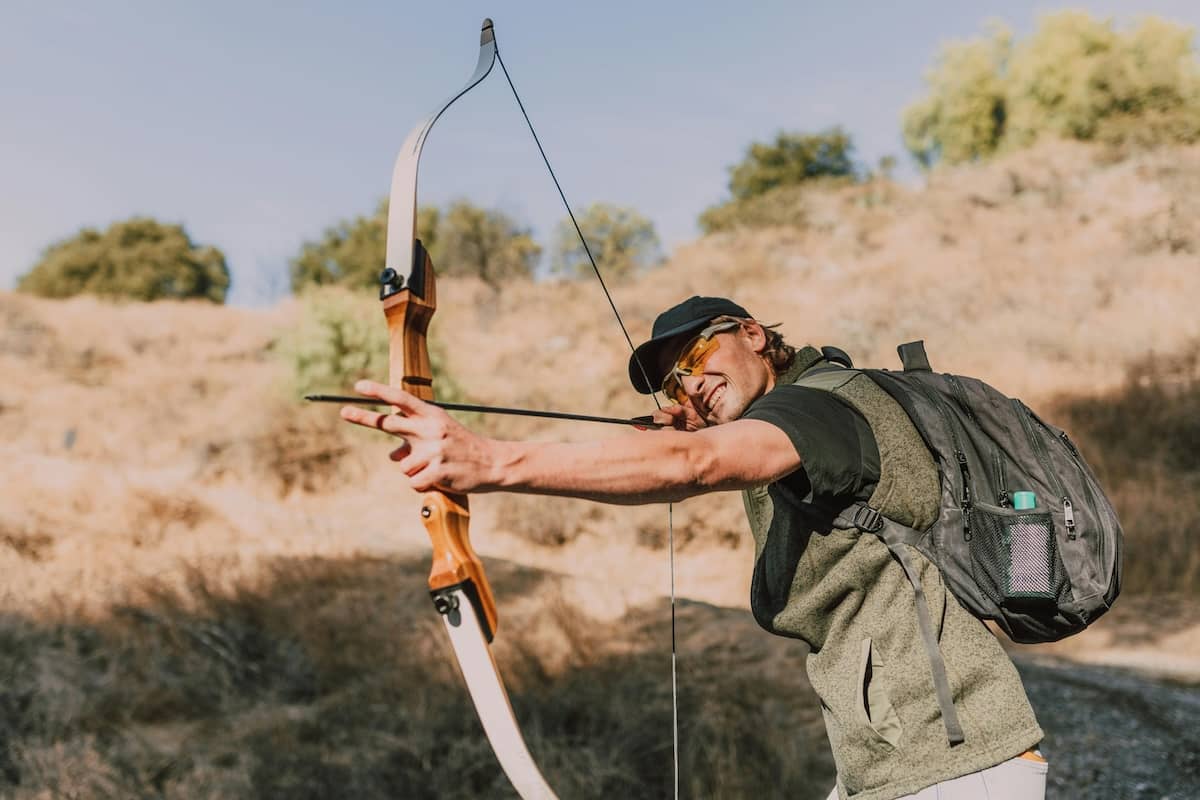

However, becoming proficient enough to hunt game with a recurve is entirely different. Learning to shoot instinctively or with a simple pin sight is difficult and requires significant amounts of practice. And because there is no cam system, they are hard to draw and hold. Recurve bows are generally made of wood or fiberglass, and once the limbs have begun to warp or lose recovery, they have to be replaced.
Longbows
Longbows are the ultimate minimalist bow: Just stick and string. Sometimes called “self” or “stick” bows, they are the ultimate challenge in archery. Longbows tend to be the quietest bow due to their lack of accessories and material to vibrate. Their basic design makes them very cost effective. Heavier, wooden arrows are usually coupled with the longbow.
How to Choose the Right Hunting Bow for Your Needs
- Determine the game you wish to hunt and the minimum archery requirements of your state.
- Get your draw length and maximum draw weight measured by an archery tech.
- Select a style of archery you want to shoot: Beginners do best when starting with a compound bow.
- Fix your budget to include the bow, accessories, arrows, and release.
- Focuses on a quality riser first and then upgrade accessories later.
Tips for Using Hunting Bows Effectively
- Practice in a variety of conditions and from different positions.
- Be patient as you wait for an bicho to present the best shot possible. A rushed shot means lost game and ruined meat.
- Know your effective limits, not just your maximum limits. Just because a bow “can” shoot that far doesn’t mean you can or should.
- Learn the differences in how bows and rifles kill: broadheads on arrows slice deeply, cutting arteries and causing exsanguination (blood loss; the speed and weight of bullets cause traumatismo that disrupts circulatory and nervous systems of the bicho.
- Become students of the game; species behavior, tendencies, and patterns will help you become a better hunter.
See also: 5 Beginner Tips to Shooting a Compound Bow.
FAQs
What bows are best for hunting?
The easy answer to this is the one you spend time shooting. Muscle memory takes time to develop and accuracy follows when you can repeat the same mechanics consistently. It’s important to select a bow that is designed for hunting and not target shooting. Check your state’s regulations and laws for minimum requirements required in your archery equipment. Be sure to pay close attention to draw weight and let-off which are different metrics. Draw weight is the amount of force required to bring a bow to full draw. Let-off is the amount of felt weight the cams decrease when holding back a bow. A bow with a 100 pound draw weight (especially heavy) with an 80% let-off will only feel like you are holding 20 pounds when at full draw.
Which bow is most popular in hunting today?
Compound bows are by far the most popular option for both target and hunting bows. They are very forgiving for new shooters as they execute proper form. The advanced mechanics belie their ease when just learning how to shoot, and allow for greater precision when aiming. Many new, entry level bows like the Bear Legit above are adjustable for both draw length and weight. This is especially good for younger shooters who can have a bow to grow with as their skill and power increase.
What is the best hunting compound bow on the market?
There is a wide variety of compound bows available for every budget. Most bows are sold as “bare” meaning they do not have many of the accessories needed. A sight, rest, stabilizer, and quiver are necessary additions that are added by the archer. While it might be thought that not including these are a cost saving measure, it is really more about preferences of the end user. Fall-away rests are the popular choice, but some may prefer a totalidade capture, static rest like a Whisker Biscuit. Bow sights range from a single pin to several and some are movable. A good rule of thumb is to purchase the best riser you can afford now and upgrade the other parts later. Ready-to-hunt packages are also great for those just entering archery or unsure of exactly what their preferences are for each accessory. They also remove the worry if you have “everything” one needs to get started which is helpful if the bow is a gift.
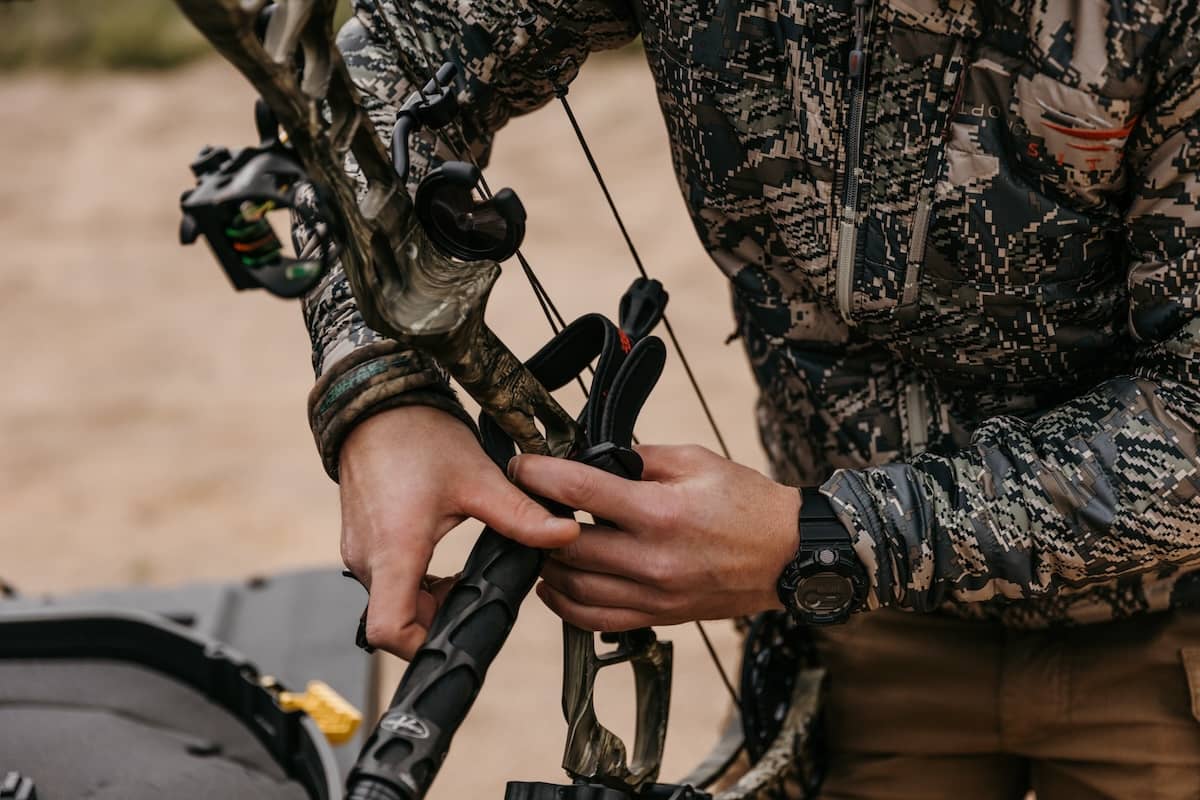

What pound bow is best for deer?
A bow with a thirty pound draw weight is generally accepted as the minimum for hunting white tailed deer. Many states regulate this and some, such as California, require higher minimum draw weights. They can also require maximum let-offs as well, so make sure to check your lugar hunting regulations. Ultimately, you want to be able to deliver the quickest and cleanest kill and draw weight is only part of that equation.
If possible, start with a forty pound draw weight. As you practice and develop the muscles needed to shoot, your ability to pull more weight will also increase. A higher draw weight has many advantages. It generates a higher kinetic energy that is imputed into the arrow which gives it more ability to penetrate the hide and bones of big game. Because they also have more energy they fly in a straighter trajectory which minimizes, but doesn’t eliminate, the adjustments needed to shoot at distance. There is a diminishing level of return, so don’t think maxing out your weight is best. The highest draw weight that still allows you to draw smoothly and straight back without sacrificing your ability to hold and aim is the best combination.
How much does a good hunting bow cost?
There is a bow for every budget-guaranteed. If just getting into archery or your budget is limited to a few hundred dollars, look for used equipment at archery shops. Make sure you have a tech look it over for loose bolts and screws, any fraying on the string and cable, and delamination of the limbs (this can be especially dangerous). There are some great deals that can be found by those who have traded in an older bow or are just looking to downsize gear.
However, if you are purchasing a new bow, spend some time at your lugar archery shop. They have demonstration bows they can quickly set up for your draw length and targets to get a feel for how the bow performs. Bows are a deeply personal weapon that can feel different in the hand for each shooter. When you’ve found a bow that settles into your palm comfortably you’ll know it’s the right one for you. While it’s rare, some new bows might not have the right thread or holes drilled for your current accessories. Take the time to do a “soft fit” at the shop or just let them transfer all of them to your new bow for you.

